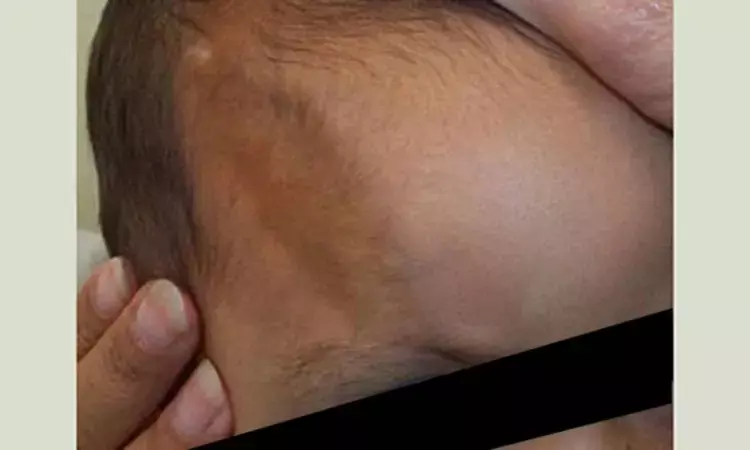- Home
- Medical news & Guidelines
- Anesthesiology
- Cardiology and CTVS
- Critical Care
- Dentistry
- Dermatology
- Diabetes and Endocrinology
- ENT
- Gastroenterology
- Medicine
- Nephrology
- Neurology
- Obstretics-Gynaecology
- Oncology
- Ophthalmology
- Orthopaedics
- Pediatrics-Neonatology
- Psychiatry
- Pulmonology
- Radiology
- Surgery
- Urology
- Laboratory Medicine
- Diet
- Nursing
- Paramedical
- Physiotherapy
- Health news
- Fact Check
- Bone Health Fact Check
- Brain Health Fact Check
- Cancer Related Fact Check
- Child Care Fact Check
- Dental and oral health fact check
- Diabetes and metabolic health fact check
- Diet and Nutrition Fact Check
- Eye and ENT Care Fact Check
- Fitness fact check
- Gut health fact check
- Heart health fact check
- Kidney health fact check
- Medical education fact check
- Men's health fact check
- Respiratory fact check
- Skin and hair care fact check
- Vaccine and Immunization fact check
- Women's health fact check
- AYUSH
- State News
- Andaman and Nicobar Islands
- Andhra Pradesh
- Arunachal Pradesh
- Assam
- Bihar
- Chandigarh
- Chattisgarh
- Dadra and Nagar Haveli
- Daman and Diu
- Delhi
- Goa
- Gujarat
- Haryana
- Himachal Pradesh
- Jammu & Kashmir
- Jharkhand
- Karnataka
- Kerala
- Ladakh
- Lakshadweep
- Madhya Pradesh
- Maharashtra
- Manipur
- Meghalaya
- Mizoram
- Nagaland
- Odisha
- Puducherry
- Punjab
- Rajasthan
- Sikkim
- Tamil Nadu
- Telangana
- Tripura
- Uttar Pradesh
- Uttrakhand
- West Bengal
- Medical Education
- Industry
Use of 3D Stereophotogrammetry helps to detect disease progression in craniofacial morphea: JAMA

USA: A recent study published in JAMA Dermatology has suggested noninvasive 3D stereophotogrammetry to be a valuable adjunctive tool for the detection of disease progression over time in patients with craniofacial morphea (CM).
In the cohort study of 27 patients with craniofacial morphea, participants underwent clinical and 3D stereophotogrammetry assessments at intervals of t 2- to 12 months. The researchers showed that over 48 months, 10 patients demonstrated CM's clinical progression, which was corroborated by 3D stereophotogrammetry assessment by a non-expert and expert with substantial interrater reliability.
Craniofacial morphea is an autoimmune disorder with characteristics of inflammation and subsequent atrophy of the skin and underlying soft tissue. It is challenging to objectively determine disease progression in CM due to the lack of clinical findings of disease activity. Therefore, Katharina S. Shaw, The Children’s Hospital of Philadelphia, Philadelphia, Pennsylvania, and colleagues aimed to evaluate the utility of 3-dimensional (3D) stereophotogrammetry in detecting disease progression in CM over time.
The study included 27 pediatric and adult patients with CM from two hospitals in Boston consecutively enrolled from 2019 to 2023. The researchers conducted a review of 3D stereophotogrammetry images and data analysis from March 1 to April 1, 2023.
At 2- to 12-month intervals, clinical and 3D stereophotogrammetry assessments were done, depending on the clinical context. The 3D stereophotogrammetry images were then qualitatively rated as showing no progression or definitive progression by a nonexpert (board-certified dermatologist) and an expert (board-certified plastic craniofacial surgeon) in 3D stereophotogrammetry. For interrater reliability, κ coefficients were calculated.
The study led to the following findings:
- Of 27 patients with CM (19 females; median age, 14 years) and 3D stereophotogrammetry images obtained from a minimum of 2-time points (median, 4 images) spaced a median of 3 months apart, 10 experienced progression of their disease based on clinical assessments performed during the study period.
- In all cases in which clinical progression was favoured, blinded qualitative assessment of 3D stereophotogrammetry images also favoured progression with substantial interrater reliability (κ = 0.80).
- A review of 3D stereophotogrammetry detected occult progression of asymmetry not noted on clinical examination in 3 additional patients.
The researchers showed that the blinded assessment of sequential 3D stereophotogrammetry images in CM patients not only corroborated clinical assessment of disease progression but also detected occult progression of facial asymmetry not appreciable on clinical examination alone.
"Therefore, 3D stereophotogrammetry may serve as a useful adjunct to clinical examination of patients with craniofacial morphea over time," they wrote. "To validate 3D stereophotogrammetry as an outcome measure in CM, future investigations are warranted."
Reference:
Shaw KS, Nguyen TT, Rajeh A, et al. Use of 3-Dimensional Stereophotogrammetry to Detect Disease Progression in Craniofacial Morphea. JAMA Dermatol. Published online October 11, 2023. doi:10.1001/jamadermatol.2023.3649
Dr Kamal Kant Kohli-MBBS, DTCD- a chest specialist with more than 30 years of practice and a flair for writing clinical articles, Dr Kamal Kant Kohli joined Medical Dialogues as a Chief Editor of Medical News. Besides writing articles, as an editor, he proofreads and verifies all the medical content published on Medical Dialogues including those coming from journals, studies,medical conferences,guidelines etc. Email: drkohli@medicaldialogues.in. Contact no. 011-43720751


